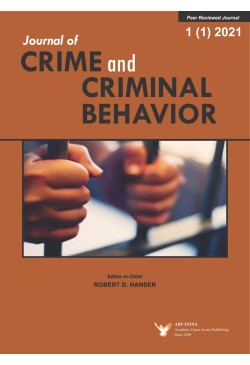
Journal of Crime and Criminal Behavior
Frequency :Bi-Annual
ISSN :2583-0244
Peer Reviewed Journal
The 9/11 Terrorist Attacks: 20 Years Later
Matthew Robinson (2022). The 9/11 Terrorist Attacks: 20 Years Later. Journal of Crime and Criminal Behavior, 2: 1, pp. 1-28. https://doi.org/10.47509 /JCCB.2022.v02i01.01
Reducing Gun Crimes: Actionable Policies for Police Organizations
Allan Y. Jiao (2022). Reducing Gun Crimes: Actionable Policies for Police Organizations. Journal of Crime and Criminal Behavior, 2: 1, pp. 29-44. https://doi.org/10.47509 /JCCB.2022.v02i01.02
Explaining Macro-Level Rape with Routine Activities Theory: A Multitheoretical Approach using Backlash Hypothesis, Social Disorganization Theory, and Evolutionary Psychology
Maria Thuy T. Trinh, Raymond E. Barranco & Casey T. Harris (2022). Explaining Macro-Level Rape with Routine Activities Theory: A Multitheoretical Approach using Backlash Hypothesis, Social Disorganization Theory, and Evolutionary Psychology. Journal of Crime and Criminal Behavior, 2: 1, pp. 45-66. https://doi.org/10.47509 /JCCB.2022.v02i01.03